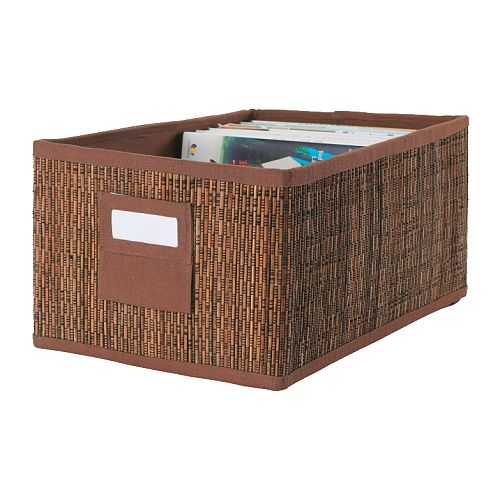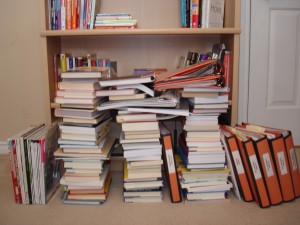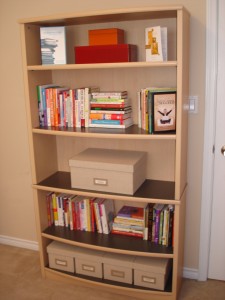Every office has office supplies and typically the supplies are all over the place. I know this, because I see this in almost every office that I’ve organized. Very few know how to organize office supplies. How many times have you gone looking for the printer cartridges, couldn’t find them, even though you know you have them somewhere. So you run to the store to buy more and a week later you find the missing cartridges. How about the 150 pens and pencils stuffed in your drawers? Just because you can buy in bulk, doesn’t mean you will actually use them before they get too old, dry up, or you don’t like writing with them.
Too often, I see boxes and boxes of old file folders, paper, and torn hanging files that are so dusty and smelly no one wants to use them. I’m telling you, it’s time to be realistic about how many office supplies you really need to have on hand. I want you to recycle or toss any office supplies that you don’t use, don’t love, or aren’t useful. PURGE, PURGE and PURGE!
Whether you have a small supply area or a large supply room, the time wasted looking for supplies and the cost of duplicate purchases costs you time and money. I guarantee that once you master how to organize office supplies, you will feel a sense of calmness and peace in your office, because you know what supplies you have, and they are at your fingertips when you need them.
Your office is “prime real estate” for being productive in your work and/or business. Keep your office supplies to a minimum and contained in an area that you can easily access. More and more people are going paperless and using fewer office supplies these days. Now is the time to consolidate and assess what supplies you actually need. Just because you spent money on it, is not a reason to keep it. Let it go, pass it on!
How to Organize Office Supplies:
First Step: Group like things together
In the video I made for you, I shared many examples and organizing products that I use when “organizing office supplies.” The first step to an office supplies system is to group like things together. Some broad categories are paper, files, notebooks, stationary, adhesives, binder dividers, pens, felts and pencils, mailing supplies, printer cartridges, cables, and blank DVD’s.
Second Step: Purge
If you have duplicate items, like three staplers, then use the “in another room” box or put them in the donate box. Anything that is broken, you don’t use, smells or is not functional, get rid of it. If you have more than 40 pens and pencils, donate the extras to a school, daycare or charity (they must be in new condition).
Third Step: Designate a space
Decide where you are going to store and organize your supplies. Keep like things together.
Fourth Step: Containerize & Label
 Time to get your office supplies system together! For paper, use metal stacking trays to maximize vertical space. Use functional containers or drawer units to contain pens and adhesives. Each space is different, so customize how you want to containerize and give yourself easy access to your office supplies. After you’ve designated and space and/or containerized the office supplies, make sure you label the containers, drawers, stacking trays or shelves to identify the supply zones. This also helps to put things back in the right place and to let you know when you need to re-order.
Time to get your office supplies system together! For paper, use metal stacking trays to maximize vertical space. Use functional containers or drawer units to contain pens and adhesives. Each space is different, so customize how you want to containerize and give yourself easy access to your office supplies. After you’ve designated and space and/or containerized the office supplies, make sure you label the containers, drawers, stacking trays or shelves to identify the supply zones. This also helps to put things back in the right place and to let you know when you need to re-order.


